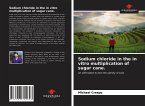Morocco is the only country in North Africa, and the second along with Egypt, to plant sugar cane and sugar beet side by side. Both crops play a key role in the Kingdom's agricultural policy. Indeed, the Green Morocco Plan has given these crops a place of prime strategic importance. However, the development of these crops has always been confronted with the proliferation of a whole range of pests and parasites threatening their production and sometimes even their existence and sustainability. In this book, several pests identified in Moroccan fields on sugar beet and sugar cane have been the subject of several studies, screening and diagnosis. The pests and pathogens dealt with are highly varied, attacking all parts of the plant (roots, stems and leaves), and are characterized by their diversity, aggressiveness and great damaging power. The book describes some aspects of Moroccan experience in the control, protection and detection of the main pests encountered in one of the Kingdom's largest irrigated areas.
Bitte wählen Sie Ihr Anliegen aus.
Rechnungen
Retourenschein anfordern
Bestellstatus
Storno








